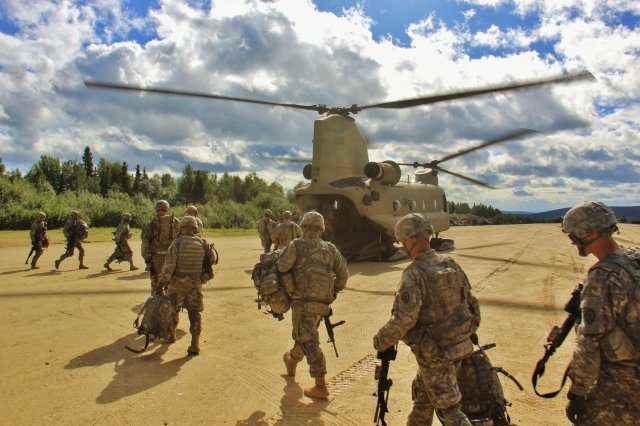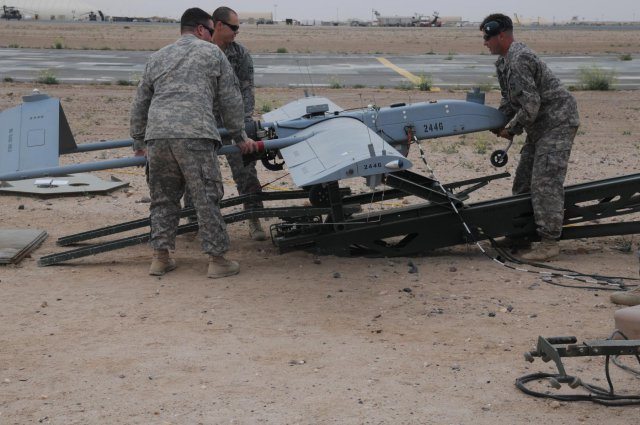YUKON TRAINING AREA, Alaska (The 5th Squadron, 1st Cavalry Regiment, 1st Stryker Brigade Combat Team, 25th Infantry Division, recently conducted a large-scale, joint training event at the Yukon Training Area, Alaska.
More than 450 Troopers and support Soldiers deployed to the Yukon Training Area, and transitioned immediately into multiple combat training scenarios. The exercise provided an opportunity for the squadron to hone cavalry skills, as well as to train in conjunction with the U.S. Air Force’s Red Flag Exercise.
“Working with the Air Force was an excellent opportunity for us to control fixed-wing air assets from the ground, which is a rare opportunity for Soldiers outside of actual combat operations,” said Lt. Col. Erik Krivda, 5-1 CAV commander. “In turn, the participating pilots capitalized on a great opportunity to enhance their training by coordinating with actual ground units instead of utilizing a (pre-written plan) with a notional element on the ground. This event paid dividends to both the Air Force and the Army by providing realistic training through the use of real-time planning and on-the-ground coordination.”
The Air Force uses Airmen known as Joint Terminal Attack Controllers, or JTACs, to best control air assets. These airmen augmented 5-1 CAV, to ensure the squadron received the needed combat air support to destroy the enemy. During the course of the two-week exercise, the squadron executed two air assault missions near Fort Greely, Alaska, which enabled several JTAC airmen to embed with the Squadron and conduct operations. The selected landing zone at Donnelly Training Area, Alaska, had not been used for more than six years. This environment provided realistic conditions both the Squadron and the air support would experience in future endeavors.
“The troops, to include the JTACs, who walk side-by-side with us, experienced first-hand how they can be placed in austere, challenging conditions at a moment’s notice, requiring them to remain in top physical condition and current on their reconnaissance tasks at all times,” said Maj. Jason Moncuse, Squadron executive officer.
Combatant commanders use aviation assets to assist in combat operations such as air assault, reconnaissance and re-supply missions. The 1st Battalion, 52nd Aviation Regiment, proved their effectiveness during the execution of the air assaults by successfully placing 75 troopers and six JTACs onto the landing zone in a simulated combat scenario.
“Air assaults enable line pilots and battalion planners to conduct the necessary coordination through the use of air mission coordination meetings, air mission briefs, aviation task force rehearsals, combined arms rehearsals and air crew mission briefs,” said Capt. Wesley Solway, an assistant planner with 1-52 Aviation. “Crew members become more accustomed to handling passengers and conducting passenger briefs, while executing egress on the (landing zone), so Soldiers don’t run into the aircraft external fuel tanks, or worse, into the rotor system. Pilots further developed a sense of how the aircraft reacts to a heavier load and how long it takes to load or unload an aircraft with passengers and equipment. This is critical for both aircraft survivability and fuel-planning purposes.”











